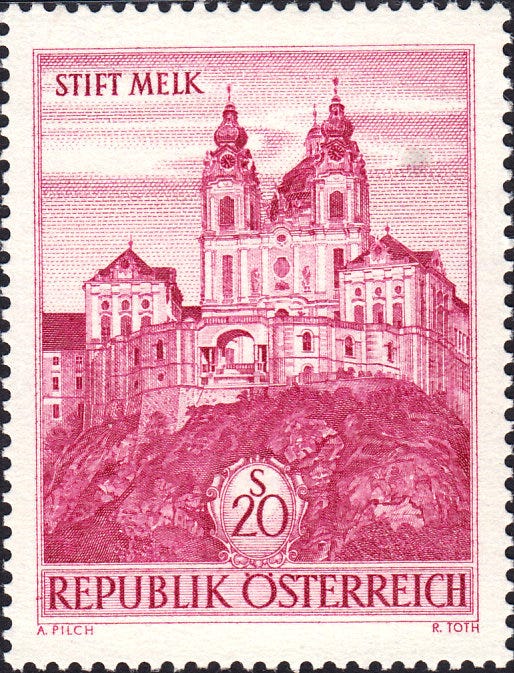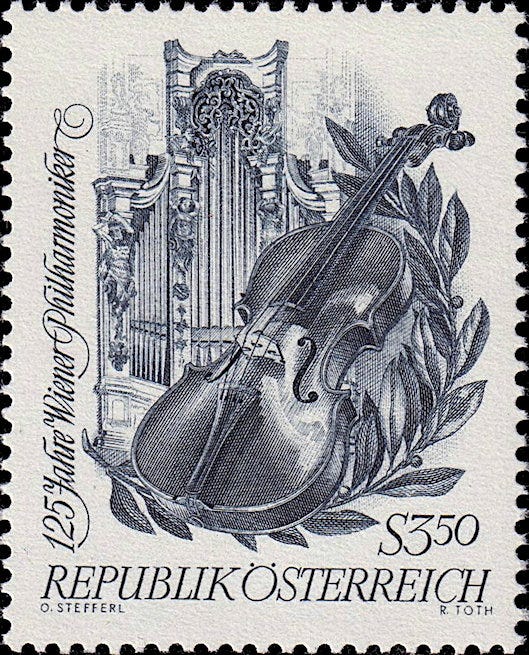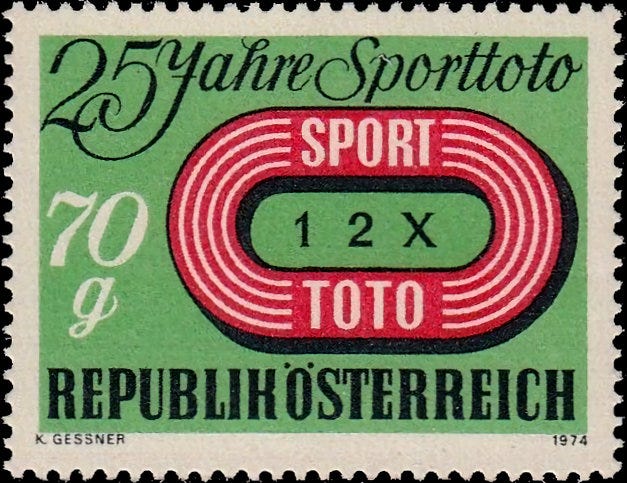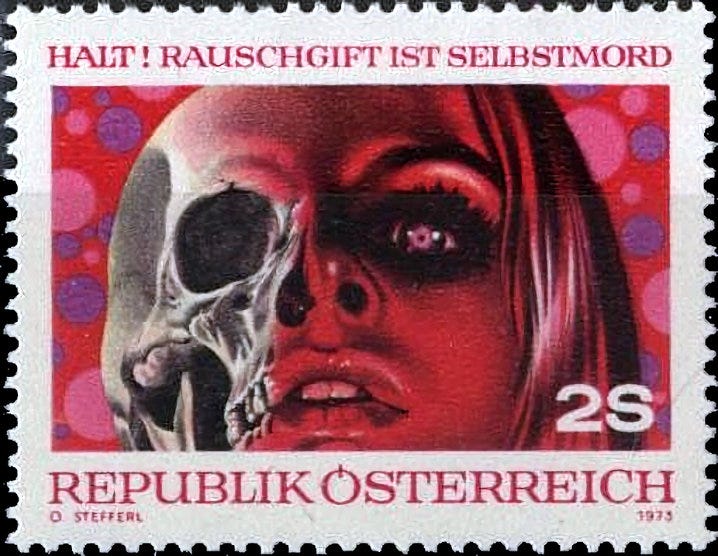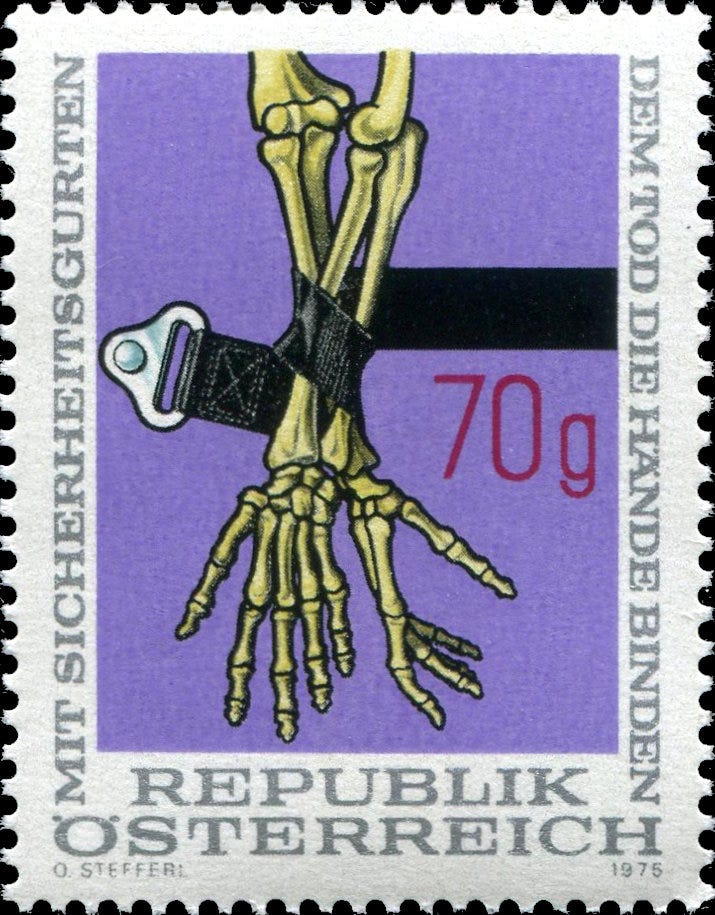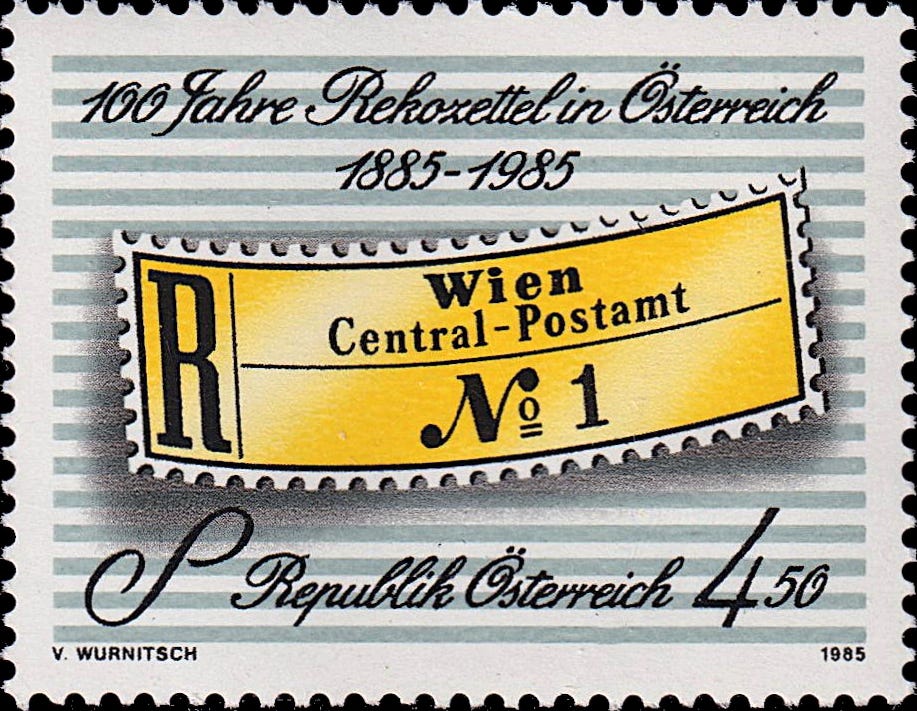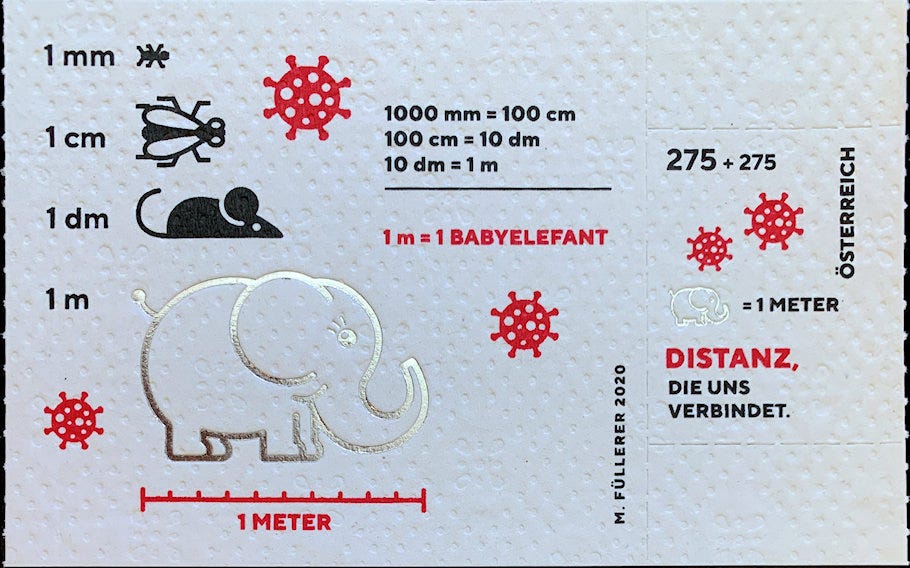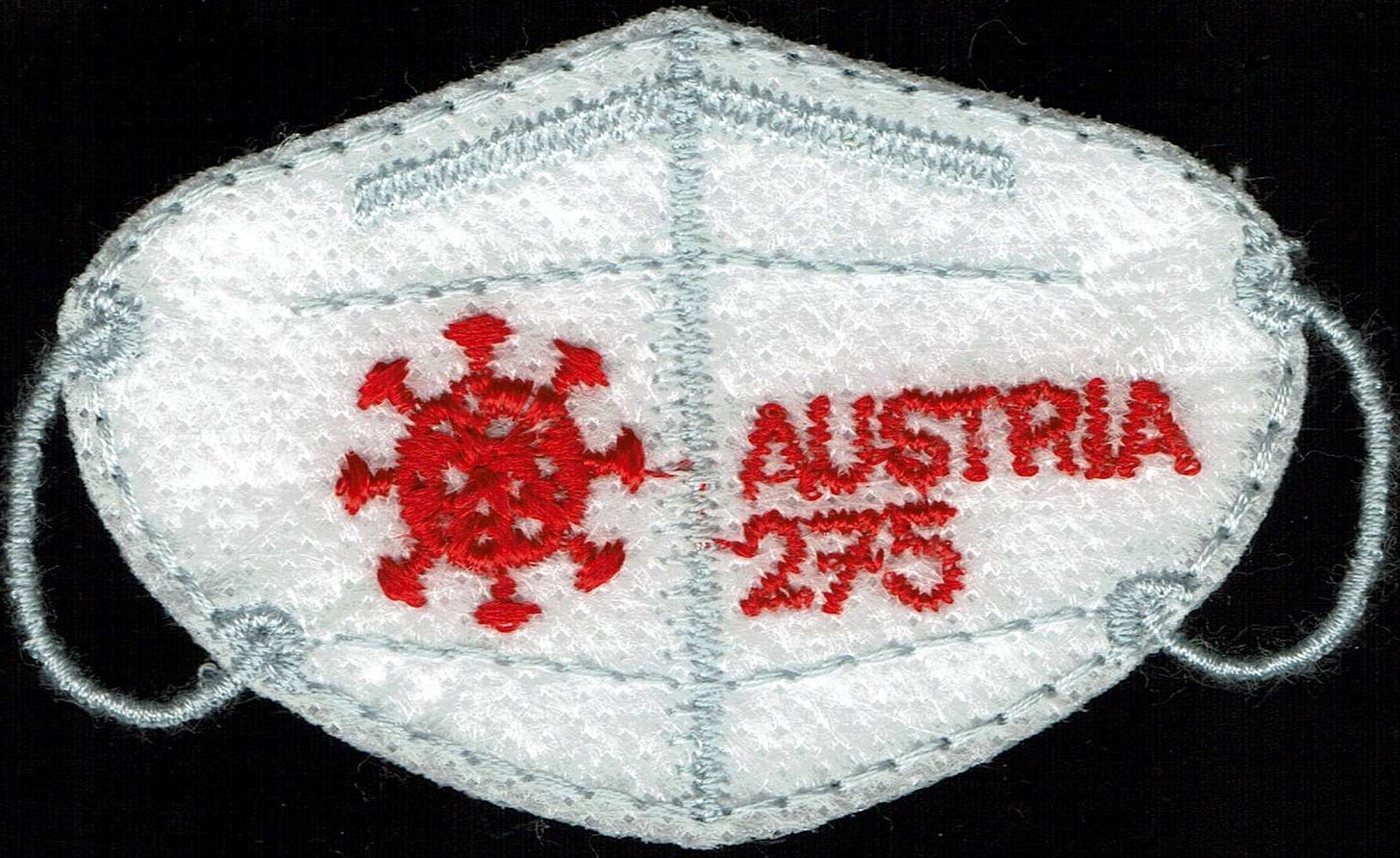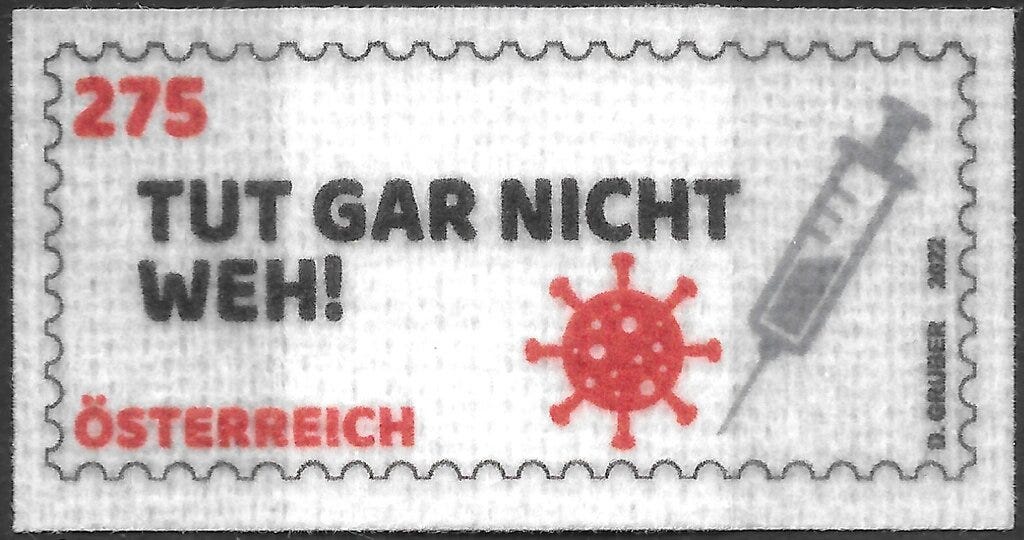I don’t think anyone can argue against the fact that Austria has produced some of the most beautiful postage stamps ever. The designs and engravings by the dynamic duo of Adalbert Pilch and Rudolf Toth never fail to impress and rival those of any other stamp artists and engravers . Two of my favorites are shown below – the Melk Abbey, from the 28-stamp buildings series of 1973-1983, and the 1967 stamp issued on the occasion of the 125th anniversary of the Vienna Philharmonic Orchestra.
The quality and beauty of Austrian stamps was maintained even when the realities of budgets and production schedules meant a shift away from purely engraved stamps to those using the cheaper and quicker printing methods of photogravure or offset lithography (though, sometimes in combination with a limited amount of line-engraving in the design).
Of course, not every design possessed the wow factor of their finest engraved issues. 1974’s issue noting the 25th anniversary of the national sports lottery has a design of which it would be generous to describe as ho-hum.
In 1973, Austria decided that a little shock value may prove useful in delivering their message. The stamp issued in January to promote the fight against drug use depicted a woman’s head with a deathly black left eye socket, with the right side of her head shown as a skeletal skull. The inscription across the top reads, “Drugs are suicide.”
Perhaps they found the stamp effective in delivering its message, because, in 1975 they once again utilized the skeleton motif in a design calling attention to the new law making the use of seat belts mandatory. This stamp, shown below, depicts a seatbelt entwined about a skeletal arm, and an inscription that reads, “Tie the hands of death with seat belts.”
Even if the designs are a bit off-putting, one must admit that the subjects were important ones to address. Sometimes, though, a subject can leave me scratching my head in wonder over the necessity of issuing a stamp for it. In 1885, Austria introduced the registration label to be used on registered letters. 100 years later, evidently feeling this was an innovation that the public simply must not forget, Austria issued a stamp commemorating the centenary of the first registration label.
Allll-righty, then.
In recent decades, Austria has been in the vanguard of countries embracing the production of unusual stamps. There was a souvenir sheet with Swarovski crystals mounted on it, a dirndl made of cloth, lederhosen made from Alcantara (i.e. simulated) leather, and an embroidered Styrian hat, among others.
It probably won’t be a surprise to anyone, then, to learn that they released no less than three unusual stamps relating to covid, including one printed on toilet paper, one which was a miniature cloth covid mask, and the latest one, an honest-to-goodness band-aid adhesive strip one could use over their vax jab.
Despite the gimmicky nature of these unusual issues, I don’t really find fault with them. Times are tough for postal systems around the world trying to stay solvent under the pressures of dwindling mail volume. I see these as, at least, gateway stamps for new collectors attracted to the novelty, but who will, it is hoped, stay for the history.
Before I close, I want to mention one other set of Austrian stamps which I did not picture here. This is a set which was overprinted with new postal values. However, the nature of the overprints is of a most unusual nature. These are one of my favorite sets and I made a video about them for my Ted Talks Stamps YouTube channel. You can click below to view it. I hope you enjoy it, like, and subscribe. And I will see you next time.




